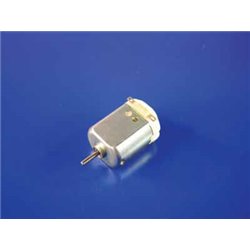Tree trunks are actually grey in colour and not brown as you would think. The next time you are out and about just...
No products
Product successfully added to your shopping cart
There are 0 items in your cart. There is 1 item in your cart.
Search Tips
Christmas and New Year
We are dispatching orders every weekday apart from Christmas Day, Boxing Day and New Year's Day.
If you order is time critical, select next day delivery at checkout.
The shop in Sandown is closed from 25th December, reopening on 30th December.
With reference to motors used in models, what is meant by the term worm gear?
A worm gear is a type of gear used in model motors that consists of a screw-like shaft (known as a worm) and a wheel (known as a worm wheel or worm gear). The worm has a helical thread that meshes with the teeth of the worm wheel, causing the wheel to rotate when the worm is turned.
Worm gears are commonly used in model railways as they provide high torque and are very efficient at reducing speed while increasing power. They are also very quiet, making them ideal for use in small-scale models where noise can be an issue.
One of the advantages of using a worm gear is that it can provide a high gear reduction in a single stage, meaning that a small motor can be used to drive a larger load. However, worm gears can also be less efficient than other types of gears, as they can create a lot of friction and heat due to the sliding contact between the worm and worm wheel.
In summary, worm gear is a type of gear used in model motors that provides high torque and efficient speed reduction, making it ideal for use in model railways and other small-scale models.
Click here to receive the tips weekly in your mailbox. You can unsubscribe at any time.









